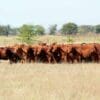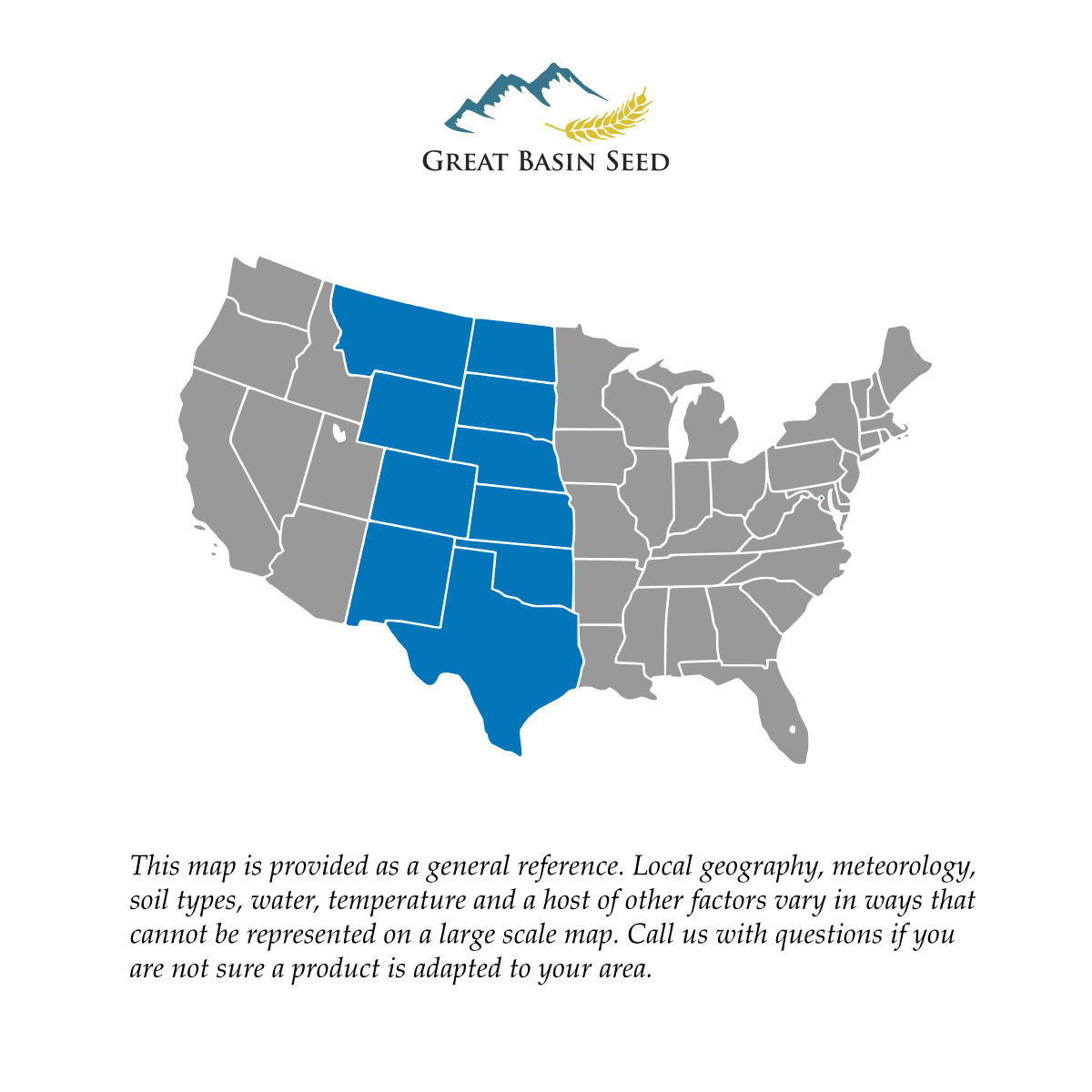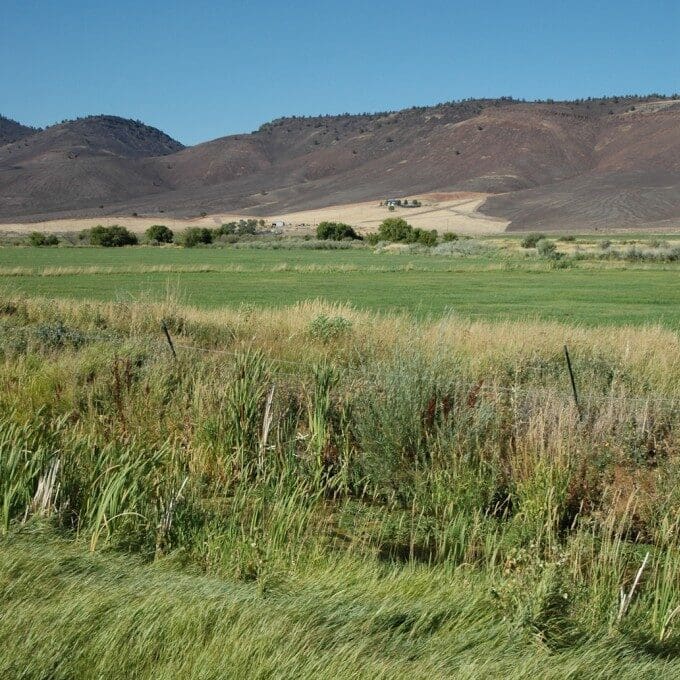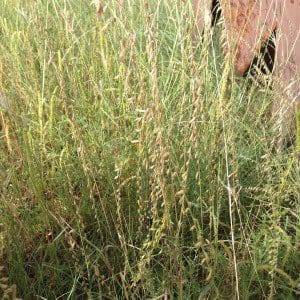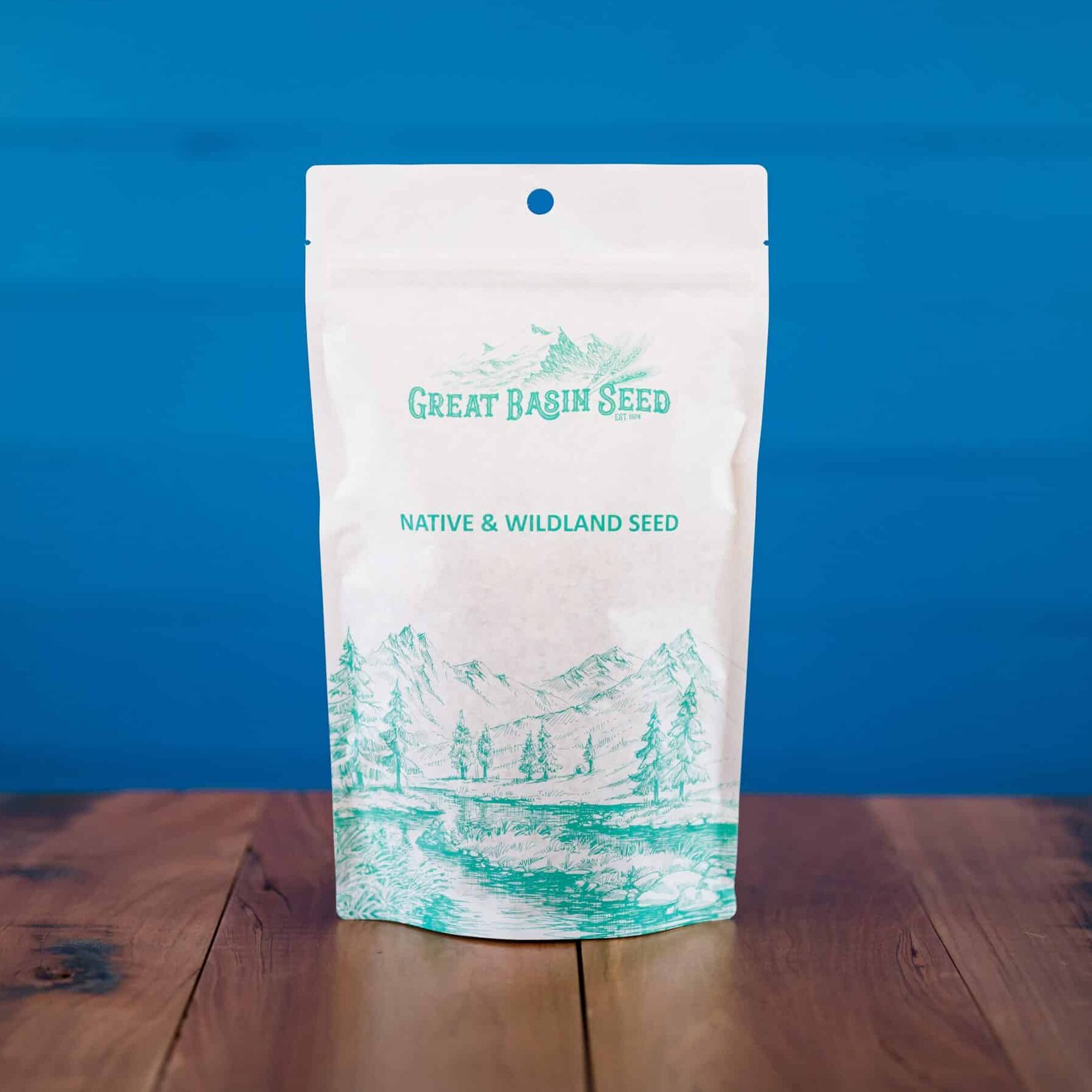Great Plains Pasture Mix
High-quality, highly palatable forage grasses for the Great Plains. Ideal for cattle and horses. It produces high yields with little to no irrigation.
- Adapted to the Great Plains of the USA
- Made of highly palatable, top of the line forage grasses
- Excellent for cattle
- Produces high yields with limited moisture
- Very hardy
- Tolerant of heavy snow, cold winters and hot summers
Min. to Max. Annual Precipitation
40in.
Average Max. Height
Great Plains Pasture Mix is made of highly palatable, top of the line forage grasses. Excellent for cattle, horses, and other forms of livestock. Produces high yeilds with limited moisture. It is tolerant to heavy snow, cold winters, hot summers, which suggests a vary hardy mix. Best used on light soils on rolling hills.
For quick plant facts please click on the “Quick Plant Facts” tab.
General Description:
Our Great Plains Pasture Mix is made of highly palatable, top of the line forage grasses. It will produce high yields with limited moisture. Great Plains Pasture Mix is very hardy. It is tolerant of heavy snow and cold winters and hot summers.
- 20% Intermediate Wheatgrass
- 20% Cache Meadow Brome
- 20% Rustler Tall Fescue
- 10% Pubescent Wheatgrass
- 10% Oro Verde Tetraploid Perennial Ryegrass
- 10% Albion Tetraploid Perennial Ryegrass
- 10% Bandito Intermediate Ryegrass
The percentages listed here are approximations. Please refer to the analysis tag on the bag for exact proportions.
Uses:
It is excellent for cattle but will also serve well as a horse pasture mix or for other forms of livestock.
Planting Conditions:
Great Plains Pasture Mix will grown in most Great Plains areas on annual rainfall and precipitation. Its is best used on lights soils on rolling hills. Supplemental watering will improve stand density, height and overall forage production. This blend will grow best in the Dakotas, eastern Wyoming, eastern Colorado, eastern New Mexico, northern Texas, Oklahoma, Kansas and Nebraska.
Planting Time:
The best time for planting this mix is early, late fall or spring. For an early fall planting you need at least 8 weeks of good growth before your first hard freeze. Keep seeds watered so the soil does not dry out (high frequency, low duration) until grass is about 4-6″ tall, then switch to a low frequency, high duration cycle.
When planting late fall ensure that night temperatures are freezing and day temperatures are cool. This will allow the seeds to lay dormant throughout the winter, germinating in the spring once the soil temperatures have reached between 50-60 degrees.
For a spring planting ensure that the seed is planted after the last frost date. Keep watered so the soil does not dry out (high frequency, low duration) until grass is about 4-6″ tall, then switch to a low frequency, high duration cycle.
Summer plantings are successful in the Great Plains if sown before summer monsoons/rainfall.
Seeding Rate:
20 lbs./acre drilled (1/4″ deep)
25 lbs./acre broadcast (1/4″ deep)
Best results are obtained when drilled, but broadcasting is the most common method of planting. For best results prepare the soil with some sort of light disturbance such as a harrow. Preparation will vary from sit to site and will depend upon your equipment.
Correct planting depth is crucial to success. Planting too deep may result in failure. Plant no deeper than 1/4″
Who is Great Basin Seed?
Great Basin Seed is a seed company that specializes in seed sales and consultation for home, ranch, farm, range and reclamation. We have been a leader in the seed industry since 1974.
Our History
We've been in the seed business since 1974.
What We Offer
We offer seed for home, farm, ranch, range and reclamation projects.
Meet the Gang
We have the best employees in the world! We are proud of the work they do, and trust them to serve you!
Right: Company founder Lloyd and his wife Paula Stevens in a wildflower seed production field circa 1977
Quick Plant Facts
| Common Name: | Great Plains Pasture Mix |
|---|---|
| Lifespan: | |
| Origin: | |
| Growth Height: | |
| Root Form: | |
| Planting Rate: | |
| Min. Precipitation: | |
| Best Time to Sow: | |
| Max Sowing Depth: | |
| Growth Season: | |
| Sun & Shade Tolerance: | Full Sun |
| Elevation of Occurance: |

